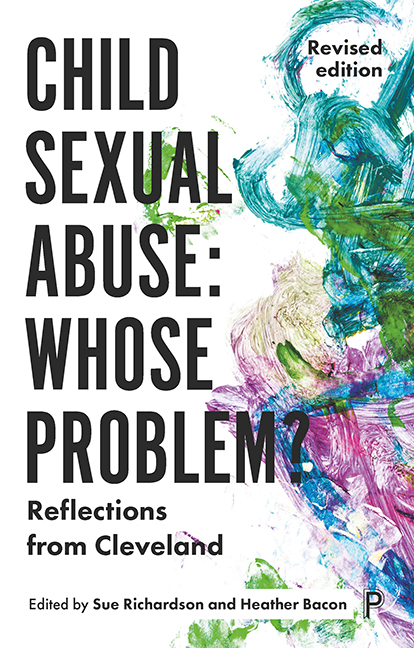Book contents
- Frontmatter
- Dedication
- Contents
- List of tables and figures
- List of abbreviations
- Notes on the editors and contributors
- Acknowledgements
- Preface
- Introduction:Why Cleveland still matters: connections with a new era
- one From Colwell to Cleveland: 1973 to 1988
- two A framework of belief
- three The medical diagnosis of child sexual abuse: the paediatrician’s dilemma
- four After the medical diagnosis: everyone’s dilemma
- five The continuum of disclosure
- six Seen but not heard: the children of Cleveland
- seven The unwanted message: child protection through community awareness
- eight Questions not answers: progressing the debate
- Conclusion:Thirty years later: how far have we progressed?
- Appendix
- References
- Index
eight - Questions not answers: progressing the debate
Published online by Cambridge University Press: 13 April 2022
- Frontmatter
- Dedication
- Contents
- List of tables and figures
- List of abbreviations
- Notes on the editors and contributors
- Acknowledgements
- Preface
- Introduction:Why Cleveland still matters: connections with a new era
- one From Colwell to Cleveland: 1973 to 1988
- two A framework of belief
- three The medical diagnosis of child sexual abuse: the paediatrician’s dilemma
- four After the medical diagnosis: everyone’s dilemma
- five The continuum of disclosure
- six Seen but not heard: the children of Cleveland
- seven The unwanted message: child protection through community awareness
- eight Questions not answers: progressing the debate
- Conclusion:Thirty years later: how far have we progressed?
- Appendix
- References
- Index
Summary
Editors’ summary
This chapter discusses how child sexual abuse might be better managed in the future. We disagree with the ‘new orthodoxy’ that puts adult consensus ahead of the interests of the child. We stress that the child's welfare should be paramount and they should not have to put up with continuing abuse in order to keep a family together. When necessary, children should be afforded protection on the basis of a medical diagnosis alone: a watching brief does not help children who become accommodated to long-term abuse. The importance of the mother's stance is again emphasized, together with the pressures on child advocates, their need for support, and the potential value of alliance with survivors. A model for a child-centred approach is proposed with a professional continuum of child versus adult-centred polarities.
If we can reframe our view of change from a problematic to a potentially liberating process, then we may be better able not only to tolerate but also to welcome the disruption for the opportunities it br ings. (Sue Richardson, 1988, p. 126)
Introduction
The aim of this chapter is to progress the debate which we believe to be essential to generate creative responses to an intractable problem. If there are solutions, they will be found only through wider change in the political and social structure of society. We see the post-Cleveland debate as having been inhibited by lack of accurate information, narrow professional and procedural concerns, fear, and attempts to ‘close down’ the problem. In Cleveland, for example, this is reflected in the figures for children on the child protection register (Cleveland County Council, 1990), which recorded a drop in the year 1989–1990 of 48.4 percent in the number of children registered under the category of sexual abuse [see also Figure 1.1, p. 11]. The task of progressing the debate and ensuring a more realistic response to abused children belongs to the whole community (Chapter 7). In reality the initiative so far has come from survivors, either adults who have painfully reclaimed their power and energy following abuse as children, or from professionals who have been victimized for speaking out on their behalf. Like victims of other forms of trauma, both depend on others to reach out but find that few will do so unless the victims themselves break the taboo on speaking of their experiences.
- Type
- Chapter
- Information
- Child Sexual Abuse: Whose Problem?Reflections from Cleveland (Revised edition), pp. 199 - 218Publisher: Bristol University PressPrint publication year: 2018



